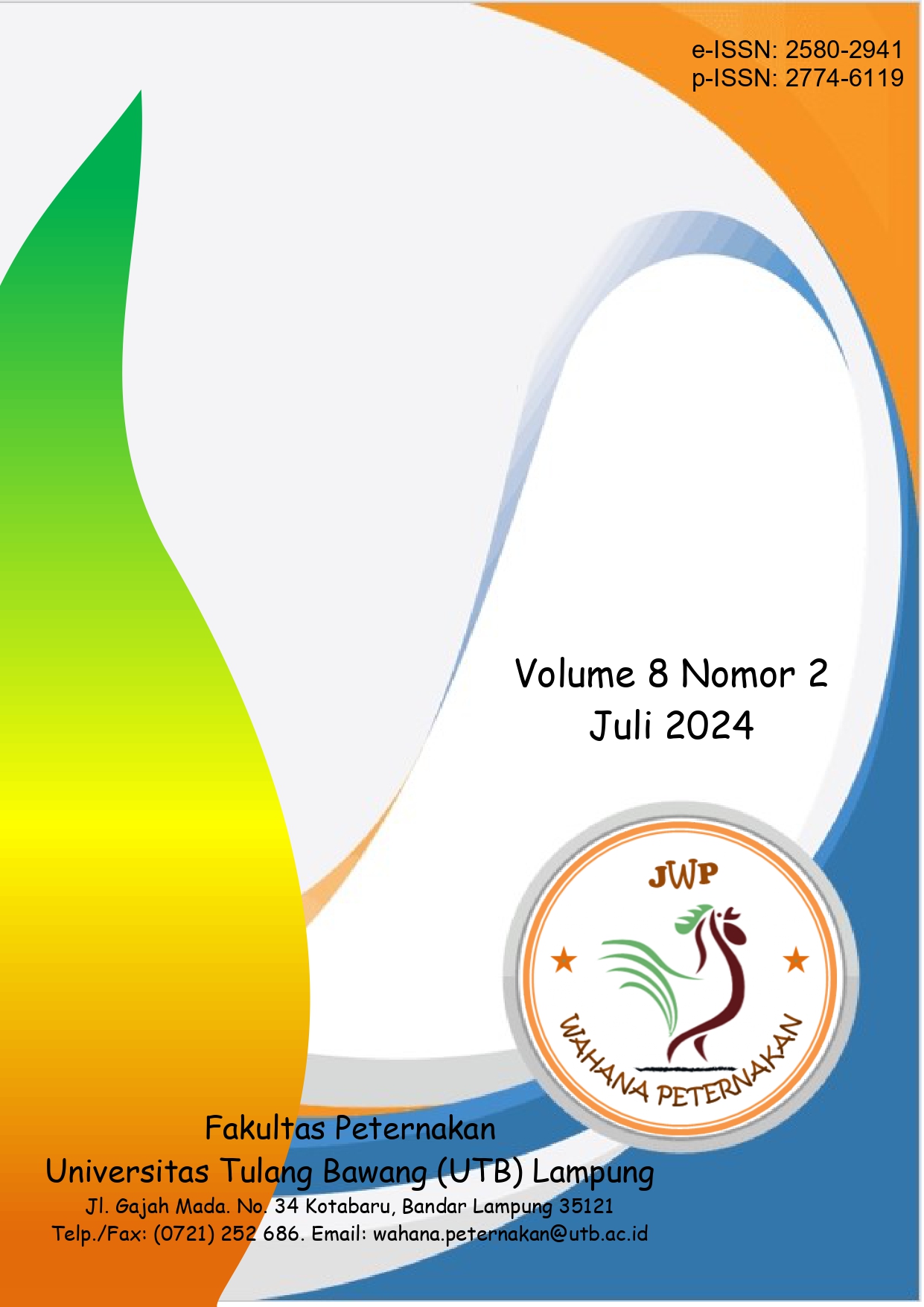TINGKAT KEBERHASILAN INSEMINASI BUATAN (IB) PADA SAPI LIMOSIN DI KABUPATEN LAMPUNG TENGAH
Success Rate Of Artificial Insemination (AI) In Limosin Cattle In Central Lampung District
DOI:
https://doi.org/10.37090/jwputb.v8i2.1823Abstract
Artificial insemination is one of the biotechnologies in livestock reproduction that allows the mating process of female livestock to be carried out without the presence of a male. AI involves a series of procedures that are designed in a planned and programmed manner, with the aim of improving the genetic quality of livestock in the future. AI technology is a solution to accelerate the increase in the beef cattle population. The opportunity for beef cattle farming in Seputih District, Surabaya, Central Lampung Regency has great potential to be developed because it can provide benefits for the community who raise livestock. From this, it is necessary to study the success rate of artificial insemination (AI) in Limousin cattle in Central Lampung Regency. This study was conducted in November 2023 in Srikaton Village (SK3), Seputih District, Surabaya, Central Lampung Regency. The variables observed included Respondent Characteristics, Service Per Conception (S/C), and Conception Rate (CR). From the results of the study, it can be concluded that Service per Conception (S/C) was recorded at 1.32. High S/C values tend to cause longer birth intervals compared to livestock that have normal birth intervals of 12 months. In addition, the Conception Rate (CR) obtained in this study reached 75.3%, which is in accordance with the ideal standard (CR) of cattle ranging from 60-75%, where the higher the CR value, the better the fertility rate of the livestock. Keywords: IB Success, Service Per Conception (S/C), and Conception Rate (CR)Downloads
References
Hardjopranjoto, 1995. Ilmu Kemajiran pada Ternak. Airlangga University Press, hal 103-114, 139-146. Ngadiyono, N. 2012. Beternak Sapi Potong Ramah Lingkungan. PT. Citra Aji Paramia, Yogyakarta.
Hartatik, T., D. A. Mahardika, T. S. M.Widi dan E. Baliarti. 2009. Karakteristik dan kinerja induk sapi silangan Limousin-Madura dan Madura di Kabupaten Sumenep dan Pamekasan. Buletin Peternakan. 33 (3) : 25–28.
Herawati T.,A. Anggraeni., L. Praharani., D. Utami., dan A. Argiris. 2012. Peran Inseminator Dalam Keberhasilan Inseminasi Buatan Pada Sapi Perah. (1). Balai Penelitian Ternak, Ciawi, Bogor. (2). Balai Inseminasi Lembang. Informatika Pertanian Vol 21(2):81-88.
Irwan Triyono, Miki Suhadi, & Riko Herdiansah. (2024). Evaluasi Tingkat Keberhasilan Inseminasi Buatan Peternakan Rakyat Pada Umur Yang Berbeda Di Kecamatan Seputih Agung. JDP: Jurnal Dunia Peternakan, 2(1), 32–40. https://doi.org/10.37090/jdp.v2i1.1603
Merthajiwa. 2011. Inseminasi Buatan (IB) atau Kawin Suntik pada Sapi. Sekolah Ilmu Dan Teknologi Hayati Institut Teknologi Bandung, Bandung
Susilawati T. 2005. Tingkat Keberhasilan kebuntingan dan ketepatan jenis kelamin hasil inseminasi buatan menggunakan semen beku sexing pada sapi Peranakan Ongole. Animal production. 7 (3) : 161–164.
Susilawati. 2011. Inseminasi Buatan dengan Spermatozoa Beku Hasil Sexing pada Sapi. Makalah Dipresentasikan Pada Kongres I Perkumpulan Teknologi Reproduksi Indonesia (PATRI) Dempasar Bali
Downloads
Published
How to Cite
Issue
Section
License
Copyright (c) 2024 Riko Herdiansah, Madiyan Sugesti, Rifki Romadhon

This work is licensed under a Creative Commons Attribution-ShareAlike 4.0 International License.








